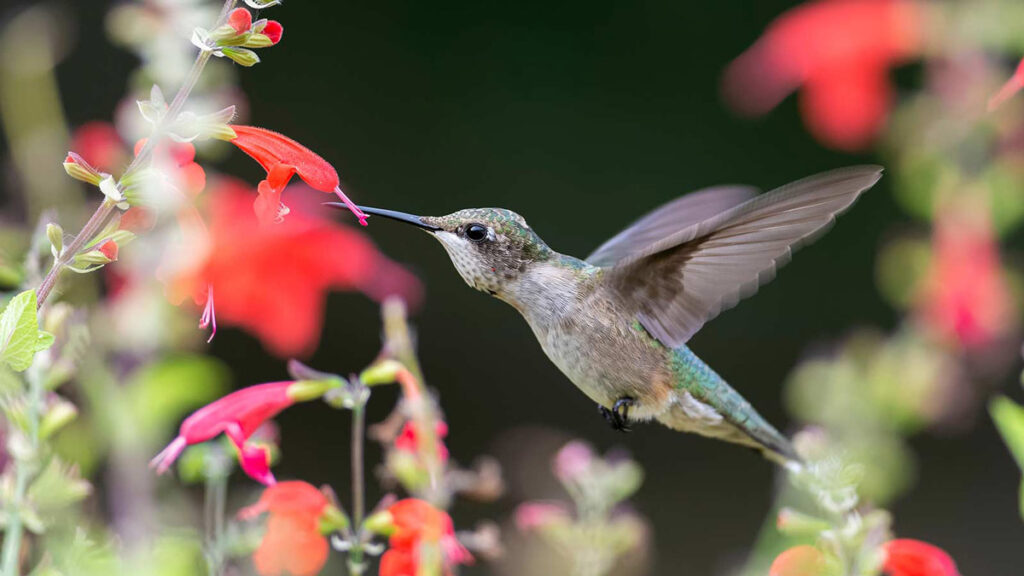
Hummingbirds, with their shimmery feathers and lightning-fast movements, are some of the most captivating creatures that you might see around your home. These tiny birds, found primarily in North and South America, hold a special place in the hearts of bird enthusiasts and nature lovers alike.
Eating Patterns and Pollination: A Symbiotic Relationship
One of the most remarkable aspects of hummingbirds is their eating patterns. These tiny birds have an incredibly high metabolism, and must feed frequently to sustain their energy levels. Their primary diet consists of nectar from flowers, which they collect using their specialized long, slender bills and extendable, tube-like tongues. This nectar not only provides them with energy but also plays a crucial role in pollination. As they feed on flowers, their heads meet the reproductive parts of the plant, facilitating the transfer of pollen from flower to flower and contributing to the plant’s reproductive success.
Helping Hummingbirds Thrive
If you’re keen on helping these delightful birds thrive, consider creating a hummingbird-friendly environment in your garden. Planting a variety of nectar-rich flowers that bloom at different times of the year can provide a continuous food source. Red, orange, and pink flowers tend to attract hummingbirds due to their vibrant colors. Also, providing a hummingbird feeder filled with a sugar-water solution can supplement their natural nectar intake, especially during periods of low flower availability.
Intriguing and enchanting, hummingbirds are a testament to the diversity and wonder of the natural world. Their unique role in pollination and their captivating behaviors make them a true gift to the ecosystems they inhabit. By creating welcoming habitats and nurturing their favorite nectar sources, we can ensure that these miniature marvels continue to grace our skies and gardens for generations to come.
